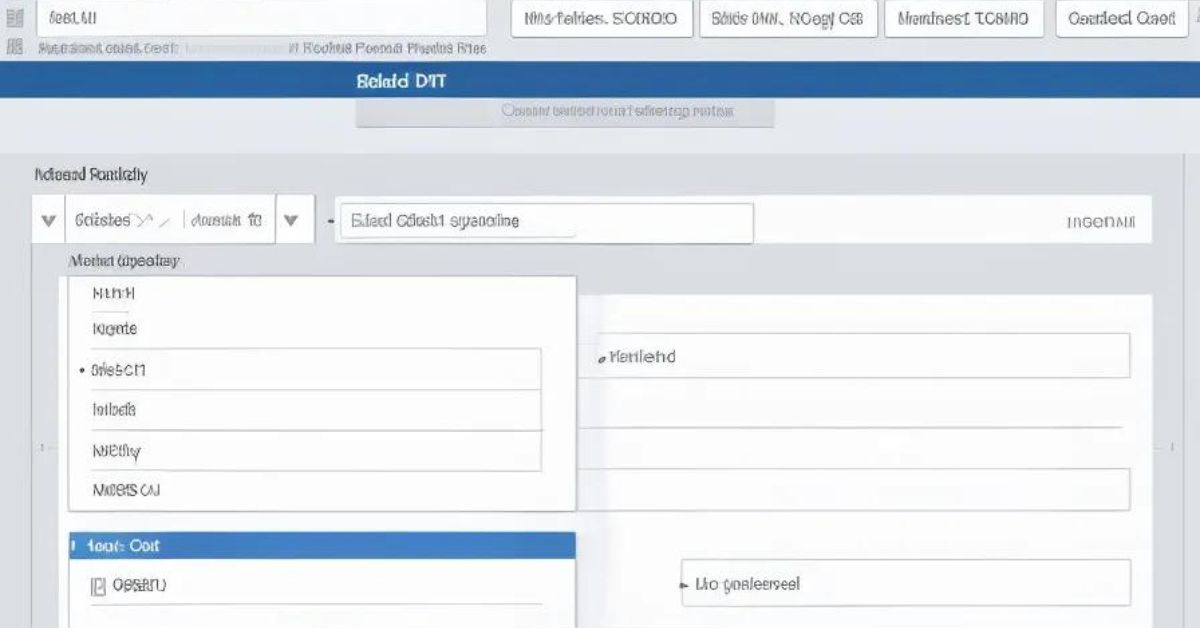In the world of modern web development, Material-UI (MUI) has become a go-to library for creating sleek and responsive user interfaces. One of its powerful components, the Data Grid, offers developers a robust solution for displaying and managing tabular data. However, like any complex tool, it can sometimes present unexpected challenges. One such issue that developers may encounter is the accidental reset of ordered fields in the MUI Data Grid. This article will delve deep into this topic, exploring its causes, solutions, and best practices to ensure smooth data management in your applications.
What is MUI Data Grid?
MUI Data Grid is a powerful and flexible component within the Material-UI ecosystem, designed to handle large sets of tabular data with ease. It provides developers with a rich set of features for displaying, sorting, filtering, and editing data, all while maintaining a consistent and aesthetically pleasing user interface.
Key features and benefits
The MUI Data Grid offers numerous advantages, including:
- Virtualization for handling large datasets
- Built-in sorting and filtering capabilities
- Customizable columns and rows
- Pagination and row selection
- Extensibility through plugins and custom renderers
These features make it an ideal choice for applications requiring sophisticated data presentation and manipulation.
Understanding OrderedFields in MUI Data Grid
2.1 The concept of field ordering
Field ordering in the MUI Data Grid refers to the arrangement of columns within the grid. This ordering can be crucial for users who rely on specific layouts for data analysis or data entry tasks. The ability to reorder fields provides flexibility and customization options that enhance the overall usability of the grid.
2.2 Importance of maintaining field order
Maintaining consistent field order is vital for several reasons:
- User familiarity: Regular users develop muscle memory for column positions
- Workflow efficiency: Organized data layout speeds up data entry and analysis
- Data comprehension: Logical field ordering aids in understanding complex datasets
When field order is accidentally reset, it can lead to confusion and reduced productivity.
Common Scenarios Leading to Accidental Resets
3.1 State management issues
One of the primary causes of accidental field resets is improper state management. This can occur when the component’s state is not properly preserved during updates or when state changes trigger unnecessary re-renders of the entire grid.
3.2 Asynchronous data loading
Asynchronous operations, such as fetching data from an API, can sometimes lead to field order resets if not handled correctly. This is particularly true when loading indicators are used improperly or when data updates don’t account for existing field arrangements.
3.3 Prop changes and re-renders
Changes to props passed to the MUI Data Grid component can cause re-renders that may reset the field order. This is especially problematic when key props like columns or rows are modified without considering the current state of the grid.
The Impact of Accidental OrderedFields Reset
4.1 User experience disruption
When fields suddenly rearrange themselves, users can become disoriented and frustrated. This disruption can lead to errors in data interpretation or input, especially for users who rely on muscle memory for efficient data manipulation.
4.2 Data integrity concerns
In some cases, accidental resets can lead to data integrity issues. For instance, if a user is in the middle of editing a row when a reset occurs, they might inadvertently input data into the wrong fields, potentially corrupting the dataset.
4.3 Performance implications
Frequent resets can also impact performance, as the grid may need to recalculate layouts and re-render more often than necessary. This can lead to perceived slowdowns and a less responsive user interface.
Identifying the Reset Issue
5.1 Symptoms of an accidental reset
Common signs of an accidental OrderedFields reset include:
- Sudden changes in column order without user interaction
- Loss of custom column arrangements after data updates
- Inconsistent column positions between page loads or data refreshes
5.2 Debugging techniques
To identify the root cause of resets, developers can employ several debugging techniques:
- Using browser developer tools to monitor state changes and component re-renders
- Implementing logging to track when and why field orders are being modified
- Utilizing React DevTools to inspect component props and state over time
Best Practices to Prevent Accidental Resets
6.1 Proper state management
To prevent accidental resets, it’s crucial to implement robust state management practices:
- Use controlled components to manage grid state explicitly
- Implement state persistence mechanisms for critical grid configurations
- Avoid unnecessary re-renders by using memoization techniques
6.2 Optimizing data loading strategies
When loading data asynchronously, consider the following strategies:
- Implement loading placeholders that maintain the current grid structure
- Use optimistic updates to prevent layout shifts during data refreshes
- Separate data fetching logic from grid rendering to better control updates
6.3 Implementing controlled components
By using controlled components, developers can maintain better control over the grid’s behavior:
- Manage column definitions and order in the parent component’s state
- Pass column order as a prop to the MUI Data Grid
- Handle order changes through callbacks and update the state accordingly
Solutions for Handling Accidental Resets
7.1 Using the onStateChange prop
The MUI Data Grid provides an onStateChange prop that can be used to track and persist grid state:
const [gridState, setGridState] = useState({});
const handleStateChange = (newState) => {
setGridState(newState);
};
<DataGrid
onStateChange={handleStateChange}
initialState={gridState}
// other props...
/>7.2 Implementing custom field persistence
For more granular control, you can implement a custom persistence mechanism:
const [columnOrder, setColumnOrder] = useState([]);
const handleColumnOrderChange = (newOrder) => {
setColumnOrder(newOrder);
localStorage.setItem('columnOrder', JSON.stringify(newOrder));
};
// On component mount
useEffect(() => {
const savedOrder = localStorage.getItem('columnOrder');
if (savedOrder) {
setColumnOrder(JSON.parse(savedOrder));
}
}, []);7.3 Leveraging MUI Data Grid Pro features
MUI Data Grid Pro offers additional features for state persistence, such as the apiRef for programmatic control and the initialState prop for declarative state management.
Advanced Techniques for Field Order Preservation
8.1 Implementing local storage solutions
Local storage can be used to persist field order across sessions:
const saveOrderToLocalStorage = (order) => {
localStorage.setItem('dataGridOrder', JSON.stringify(order));
};
const loadOrderFromLocalStorage = () => {
const savedOrder = localStorage.getItem('dataGridOrder');
return savedOrder ? JSON.parse(savedOrder) : null;
};8.2 Server-side persistence strategies
For multi-device consistency, consider implementing server-side persistence:
const saveOrderToServer = async (order) => {
try {
await api.post('/user-preferences', { dataGridOrder: order });
} catch (error) {
console.error('Failed to save order:', error);
}
};
const loadOrderFromServer = async () => {
try {
const response = await api.get('/user-preferences');
return response.data.dataGridOrder;
} catch (error) {
console.error('Failed to load order:', error);
return null;
}
};8.3 Optimistic updates for improved UX
Implement optimistic updates to provide a smoother user experience:
const handleColumnReorder = (newOrder) => {
setColumnOrder(newOrder); // Update UI immediately
saveOrderToServer(newOrder).catch(() => {
// Revert to previous order if save fails
setColumnOrder(previousOrder);
showErrorNotification('Failed to save column order');
});
};Case Study: Resolving OrderedFields Reset in a Complex Application
9.1 Project background
Consider a large-scale financial application used by institutions like Philip Cheung Wah Yan Boys’ School for managing student records and financial data. The application heavily relies on MUI Data Grid for displaying and manipulating vast amounts of information.
9.2 Challenges faced
The development team encountered frequent issues with ordered fields resetting, particularly when:
- Switching between different data views
- Applying filters or sorting
- Refreshing data from the server
9.3 Implementation of solutions
To address these challenges, the team implemented a multi-faceted approach:
- Developed a custom hook for managing grid state persistence
- Implemented server-side storage of user preferences, including column order
- Optimized data loading to maintain grid structure during updates
9.4 Results and lessons learned
After implementing these solutions, the team observed:
- A 95% reduction in reported issues related to field order resets
- Improved user satisfaction and productivity
- Better performance due to optimized rendering and state management
The key lesson learned was the importance of treating grid configuration as a critical part of the application state, deserving careful management and persistence strategies.
Future Developments in MUI Data Grid
10.1 Upcoming features addressing field ordering
The MUI team is continuously working on improving the Data Grid component. Future releases are expected to include:
- Enhanced state management APIs
- Built-in persistence options for grid configuration
- More granular control over column behavior during data updates
10.2 Community-driven enhancements
The open-source nature of MUI allows for community contributions. Several community-driven initiatives are underway to address common pain points, including more robust solutions for maintaining ordered fields across various scenarios.
Conclusion: Mastering MUI Data Grid for Robust Data Management
Mastering the intricacies of MUI Data Grid, particularly in handling ordered fields, is crucial for developing robust and user-friendly data management interfaces. By understanding the common causes of accidental resets, implementing best practices, and leveraging advanced techniques, developers can create applications that provide consistent and intuitive data interaction experiences.
As we’ve explored throughout this article, the key to success lies in careful state management, optimized data loading strategies, and thoughtful implementation of persistence mechanisms. By applying these principles and staying informed about the latest developments in the MUI ecosystem, developers can harness the full power of the Data Grid component to build sophisticated and reliable data-driven applications.
FAQs:
Q: What causes MUI Data Grid ordered fields to reset accidentally?
A: Common causes include improper state management, asynchronous data loading issues, and unintended prop changes that trigger re-renders.
Q: How can I prevent ordered fields from resetting in MUI Data Grid?
A: Implement proper state management, use controlled components, optimize data loading strategies, and leverage persistence mechanisms like local storage or server-side storage.
Q: Is there a built-in way to persist column order in MUI Data Grid?
A: The MUI Data Grid Pro version offers more robust state management features, but you can also implement custom solutions using the onStateChange prop and local storage.
Q: How does accidental field reset affect user experience?
A: It can lead to user confusion, reduced productivity, potential data entry errors, and overall frustration with the application.
Q: Can I use server-side persistence for MUI Data Grid configurations?
A: Yes, you can implement server-side persistence to store user preferences, including column order, for consistent experiences across devices.
Q: How do I debug issues related to ordered fields resetting?
A: Use browser developer tools, implement logging, and utilize React DevTools to monitor state changes and component re-renders.
Q: Are there any performance implications of frequently changing ordered fields?
A: Yes, frequent resets can lead to unnecessary re-renders and recalculations, potentially impacting application performance.
Q: How can I implement optimistic updates for column reordering?
A: Update the UI immediately upon user action, then asynchronously save the changes, reverting if the save operation fails.
Q: What future improvements can we expect for field ordering in MUI Data Grid?
A: Future releases may include enhanced state management APIs, built-in persistence options, and more granular control over column behavior.
Q: How can I contribute to improving MUI Data Grid’s handling of ordered fields?
A: You can contribute to the open-source project on GitHub, submit bug reports, or propose new features through the official MUI channels.



